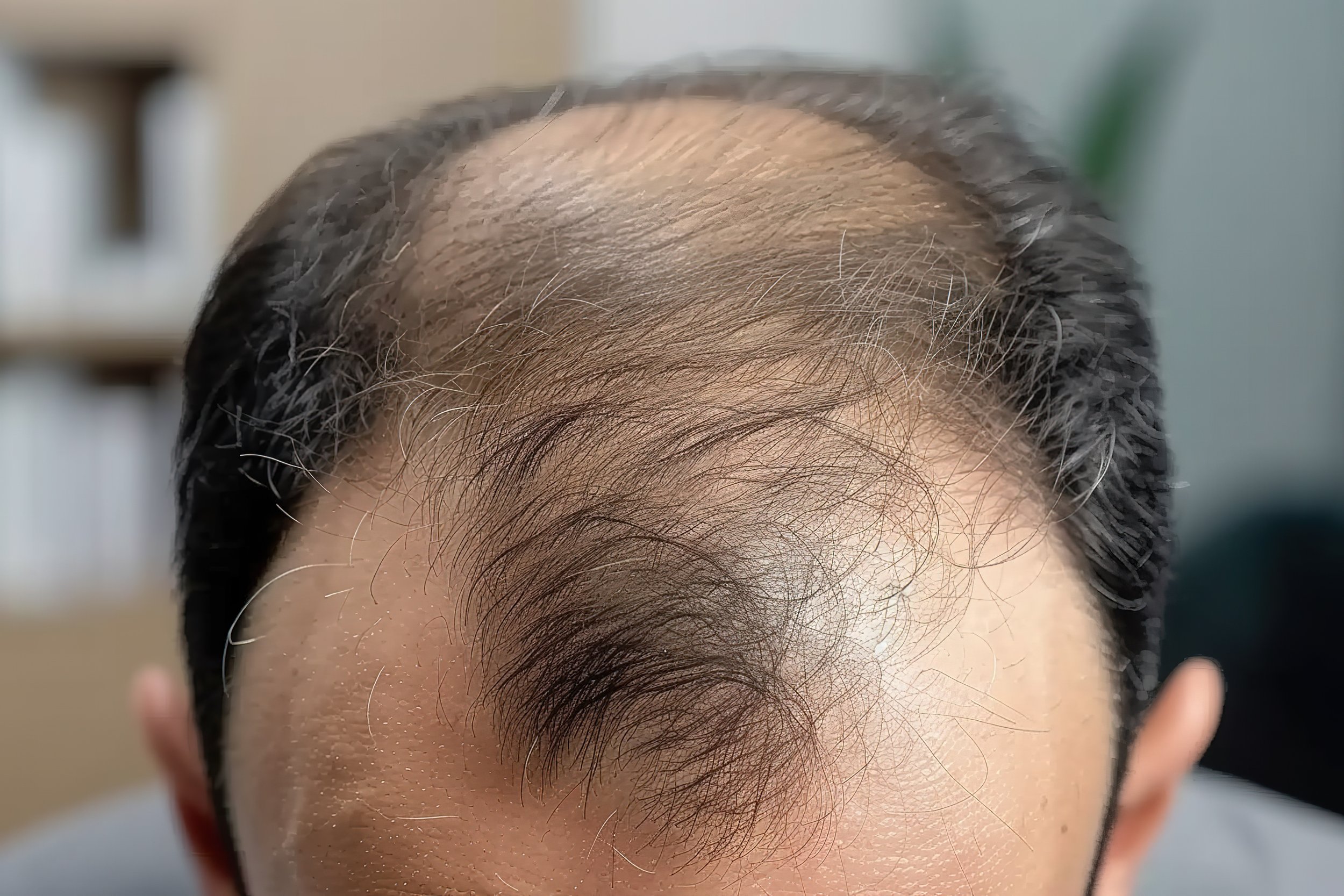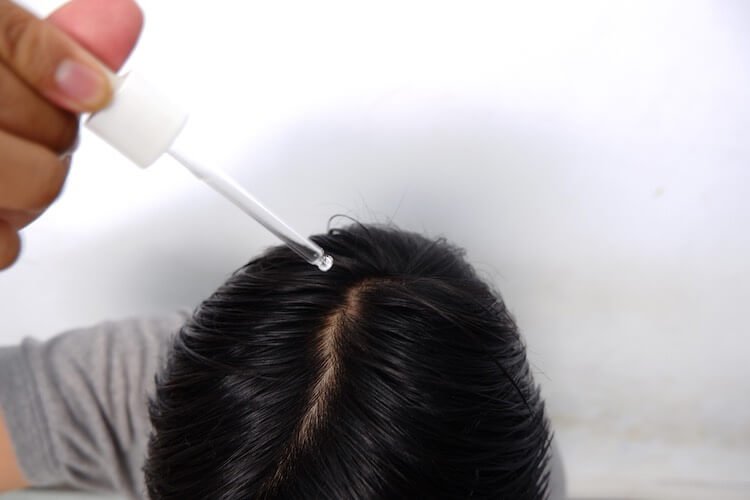Our Hair Loss Protocols
Female Pattern Hairloss
Introduction
Female pattern hair loss (FPHL; female pattern alopecia, androgenetic alopecia in females) is a common form of nonscarring hair loss that most frequently occurs in adult females and primarily involves the frontal scalp and vertex of the scalp. Untreated, FPHL results in a slow, progressive decline in the density of scalp hair but does not typically progress to baldness.
Typical case of FPHL
Male Pattern Hairloss
Introduction
Male pattern hair loss (MPHL) also known as androgenetic alopecia is a common, progressive form of hair loss distinguished by the reduction of terminal hairs on the scalp in a characteristic distribution. The typical sites of involvement are the anterior scalp, mid-scalp, temporal scalp, and vertex of the scalp. Hair loss occurs over the years.
Typical case of MPHL
Treatment principles
Our goals for treating both kinds of hair loss include cessation of hair loss progression and improvement of terminal hair density in a way that is cosmetically satisfactory for our patients. Responses to treatment vary, so we recommend at least several months of treatment so we can assess what works for you as an individual and whether more interventions are necessary for satisfactory results.
Our go-to initial Treatments for both kinds of hair loss
As a form of treatment that is well tolerated by everyone and comes with minimal or no side effects, we recommend a combination of micro-needling and PRP. These procedures are effective because they stimulate the accumulation of growth factors in the scalp and improve blood flow, which over time results in ticker hair and new hair follicle growth.
Microneedling
PRP
Additionally recommended treatments
In addition to our two primary initial treatments, we recommend the daily use of topical minoxidil. This medication acts as a vasodilator, increasing blood flow to hair follicles. Enhanced blood flow boosts the delivery of nutrients to the scalp, promoting the development of new, stronger hair follicles.
Our Patient-specific treatments
We consider these treatments below based on sex and individualized diagnostics realized by our doctors, and we often leave them for cases where they will be particularly beneficial or where the previous more generalized treatment options have not yielded all of the patient's desired results or have not been well tolerated for one reason or another.
FPHL Specific
Bloodwork Based: Spironolactone
This treatment is considered when bloodwork reveals that the patient is producing androgen levels higher than what is typical for females.
MPHL Specific
Based on risk-acceptance: Finasteride
Finasteride is one of the two FDA-approved treatments of MPHL, it is highly effective but comes with significant drawbacks that many patients aren’t willing to overlook
Diagnostic-based: Ketoconazole
We will recommend and prescribe ketoconazole-containing shampoos for patients after a positive diagnosis of Seborrheic Dermatitis.
Preference-based: Oral Minoxidil
For patients who find the topical application of minoxidil hard to adhere to and are in acceptance with generalized hair-growth around the body.
Preference-based: Low-level laser
involves the use of a specialized comb, helmet, or other device to deliver red to infrared light to the scalp. The mechanism of action is not fully understood, but it shows promising results









